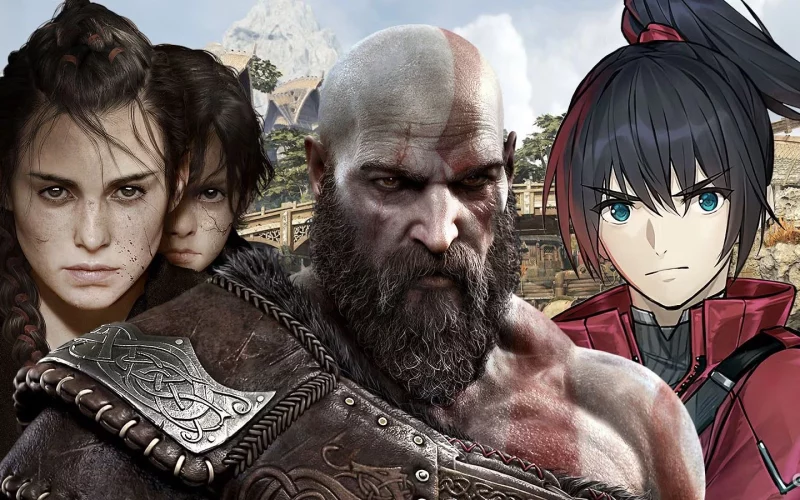Introduction
Interactive storytelling has revolutionized the entertainment industry, offering audiences a new way to engage with narratives. Unlike traditional passive experiences, this innovative approach empowers viewers and players to shape the story, creating a personalized and immersive journey.
What Is Interactive Storytelling?
Interactive storytelling combines technology and creativity to craft stories where audiences can actively participate. This can range from choosing a character’s actions in a video game to selecting the plot twists in interactive movies or TV shows. By breaking the traditional fourth wall, it turns viewers into co-creators of the narrative.
The Evolution of Interactive Storytelling

Interactive storytelling has come a long way. From the choose-your-own-adventure books of the 1980s to today’s video games and streaming platforms, this type of storytelling keeps getting better. Companies like Netflix and game studios such as Telltale Games create stories that let you decide what happens next. Advancements in technology, like AI, virtual reality (VR), and augmented reality (AR), are making these experiences even more exciting.
How Interactive Storytelling Works
Interactive storytelling lets you make choices that affect the story. In a video game, you might pick what your character says or does, changing what happens next. In interactive movies or shows, you could decide between two paths, and each leads to a different outcome. This approach makes the story feel personal you’re part of the action.
The Growing Popularity of Interactive Storytelling

Interactive storytelling is becoming more popular as more people discover it. New technologies like virtual reality (VR) and augmented reality (AR) are opening up endless possibilities. We’re seeing more interactive content on streaming platforms, in video games, and even in live performances. As technology keeps improving, more industries are likely to use interactive storytelling to create fun and engaging experiences. It’s clear that this way of telling stories is here to stay.
How Technology is Driving Interactive Storytelling
New technology is making interactive storytelling better and easier. Faster internet speeds and better graphics allow creators to make stories that look and feel real. Tools like artificial intelligence can create smarter, more responsive characters that adapt to your choices. As technology keeps improving, the options for creating and enjoying interactive stories will continue to grow.
Why Audiences Love Interactive Stories

People love interactive stories because they feel like they are part of the action. Instead of just watching, they can make choices that change what happens next. This gives them control over the story and makes it more exciting because they never know what will happen. For those who like to replay games or movies, the different outcomes offer new experiences each time.
Interactive storytelling is popular because it:
- Keeps You Engaged: You care more about the outcome because you’re part of it.
- Offers Replay Value: Different story paths make it fun to experience again.
- Builds Emotional Connections: Your choices help you connect more with characters and the story.
Benefits of Interactive Storytelling

Interactive storytelling has many benefits. It makes stories more fun because viewers can make choices that change what happens. This helps people feel more connected to the story and its characters. Plus, you can replay a story and see different outcomes, which keeps things exciting and makes people want to come back.
The Impact on the Entertainment Industry
Interactive storytelling is changing the entertainment world. In traditional TV shows and movies, everyone sees the same story. But with interactive storytelling, creators can offer different versions of a story. This lets viewers have a unique experience each time they watch. It also gives creators more freedom to be creative, while offering viewers something fresh and exciting that’s different from regular shows and movies.
Popular Examples of Interactive Storytelling

Many popular examples of interactive storytelling can be found in games, TV shows, and movies. For example, Netflix’s Bandersnatch lets viewers choose what the main character does at key moments, leading to different endings. In games like The Walking Dead and Heavy Rain, players make choices that change the direction of the story. These examples show how interactive storytelling makes the experience more personal and fun.
The Role of Technology in Interactive Storytelling
Technology plays a big role in making interactive storytelling work. New tools like virtual reality (VR), artificial intelligence (AI), and augmented reality (AR) help create richer experiences. These technologies allow stories to change based on the choices you make, giving you a new journey each time you interact with it.
Industries Embracing Interactive Storytelling

1. Gaming
Games like The Witcher and Detroit: Become Human showcase interactive storytelling, allowing players to make choices that influence the game’s world.
2. Streaming Services
Netflix’s Bandersnatch is a prime example of interactive storytelling in streaming. It lets viewers choose the main character’s decisions, leading to varied endings.
3. Education and Training
Interactive storytelling has expanded beyond entertainment, being used in training simulations, e-learning platforms, and corporate workshops.
How Interactive Storytelling Enhances Creativity

Interactive storytelling lets creators try out new ideas and explore different ways to tell stories. Since audiences get to make choices, creators can offer multiple paths, each one different. This freedom allows them to be more creative than in traditional storytelling. Whether in a game or TV show, interactive storytelling pushes boundaries and brings fresh ideas.
Interactive Storytelling in Advertising
Interactive storytelling is also being used in advertising. Brands use it to connect with customers in a fun, new way. For example, some ads let viewers choose which products they want to learn about or make choices that change the ad. This creates a fun experience and helps brands connect with people more deeply. It’s a creative way to market products while involving the audience.
The Use of Interactive Storytelling in Movies and TV Shows

Movies and TV shows are using interactive storytelling more than ever. For example, Black Mirror: Bandersnatch on Netflix lets viewers choose what the main character does at key moments, leading to different storylines. This makes the story more exciting because the audience helps decide what happens next. As more streaming platforms use this format, we can expect to see even more creative interactive content in the future.
Interactive Storytelling in Live Events
Interactive storytelling is also being used in live events. In theater and performances, audiences can sometimes help influence the story with their choices. This makes the experience feel more like a team effort between the performers and the audience. Live events like this are becoming more popular, offering a fun and unique way to enjoy storytelling in real time.
The Growing Use of Interactive Storytelling in Education

Interactive Storytelling Across Different Platforms

The Future of Interactive Storytelling

The future of interactive storytelling looks very promising. As technology keeps improving, we can expect even more advanced and immersive experiences. AI might be able to create stories that change based on individual preferences, and virtual worlds in the metaverse could take interactive storytelling to a whole new level. It’s clear that this trend is just getting started, and we’ll see more creative and exciting uses of interactive storytelling in the years to come.
Analysis Table: Key Elements of Interactive Storytelling
| Element | Description | Example |
|---|---|---|
| Branching Narratives | Stories with multiple endings based on user choices | Detroit: Become Human |
| Immersive Technology | Use of VR/AR to enhance realism | Half-Life: Alyx |
| User Engagement | Involving users as co-creators | Bandersnatch |
| Replayability | Multiple outcomes encourage repeated plays | The Witcher 3 |
Comparative Table: Traditional vs. Interactive Storytelling
| Aspect | Traditional Storytelling | Interactive Storytelling |
|---|---|---|
| Audience Role | Passive viewer | Active participant |
| Narrative Structure | Linear | Branching, dynamic |
| Technology Requirement | Minimal | Advanced (VR, AR, consoles) |
| Replay Value | Low | High |
| Production Complexity | Moderate | High |
Conclusion
Interactive storytelling is changing the way we experience stories, making them more engaging, personalized, and immersive. Whether it’s in video games, movies, or even education, this form of storytelling allows people to become a part of the narrative. It gives audiences more control, creating an exciting and rewarding experience. As technology continues to improve, we can expect even more creative ways to tell interactive stories, making the future of entertainment brighter and more interactive than ever before.










